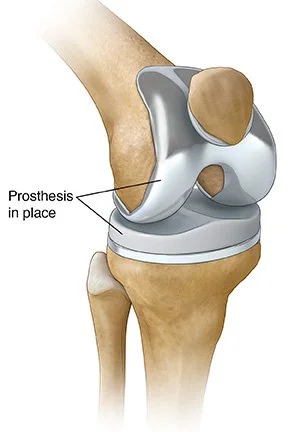Do I need Physiotherapy after Knee Joint Replacement Surgery?
Knee joint replacement surgery is a significant procedure that requires careful rehabilitation and recovery. Physio plays a crucial role in helping patients recover from knee joint replacement surgery, and it is often recommended to help patients regain their range of motion, strength, and stability. In this article, we will explore the reasons why physiotherapy is necessary after knee joint replacement surgery and what you can expect during your physical therapy sessions.
What is Knee Joint Replacement Surgery?
Knee joint replacement surgery, also known as knee arthroplasty, is a procedure where a damaged knee joint is replaced with a prosthetic implant. The goal of the surgery is to relieve pain, improve joint function, and enhance mobility. Knee joint replacement surgery is usually recommended for individuals with severe knee joint damage, such as osteoarthritis, that has not improved with other conservative treatments such as medication, braces, or initial physio treatment.
Why is Physiotherapy Necessary after Knee Joint Replacement Surgery?
After knee joint replacement surgery, physio is essential to help patients regain their strength, mobility, and overall function. Physio helps to reduce pain, increase range of motion, and improve the strength and stability of the knee joint. During physio, patients will work with a Physiotherapist to perform exercises that are designed to help them recover from their surgery.
What can I Expect During my Physio Sessions?
During your physio sessions, patients can expect to perform a variety of exercises that are designed to help them regain their strength, mobility, and stability. These exercises can be performed in the clinic under the supervision of your Physiotherapist, however patients will also be given exercises to perform at home in order to endorse rapid recovery. Initially, patients will also benefit from use of the a Game Ready cold compression unit to assist with pain and swelling during the acute phase of recovery.
The Physio will also complete hands-on manual therapy to endorse range of motion and stretch out restricted tissue. As symptoms improve the degree of exercise will be increased, assisting you to an excellent recovery.
The Importance of Compliance with Physio after knee replacement
It is important to attend all physio sessions as directed by your surgeon.. Physio is a gradual process, and it is essential to stick with the recommended schedule to ensure a successful recovery. Failing to attend physio sessions or not completing recommended exercises can delay the healing process and result in a longer recovery time.
How Long Will I Need Physical Therapy after Knee Joint Replacement Surgery?
Most people are getting along well after 3-4 months. However, with that said, some people are faster and some are slower depending on a number of factors. Your surgeon will be able to give you a better indication once he has performed the surgery. Some of the relevant factors are:
degree of initial damage and complexity of surgery
adherence to the prescribed rehabilitation program
Can Physio Help Prevent Complications after Knee Joint Replacement Surgery?
Physio can help prevent complications after knee joint replacement surgery by promoting proper healing and improving joint function. By performing the recommended exercises and attending all sessions, patients can reduce their risk of developing complications such as joint stiffness, joint instability, or implant failure.
What are the Benefits of Physio after Knee Joint Replacement Surgery?
Physio after knee joint replacement surgery offers numerous benefits, including reducing pain, improving range of motion, increasing strength and stability, and enhancing overall joint function. Physio can also help patients return to their daily activities, such as walking, climbing stairs, and engaging in physical activities.
Conclusion
In conclusion, physio is an essential component of the recovery process after knee joint replacement surgery. By attending therapy sessions and performing recommended exercises, patients can regain their strength, mobility, and stability and improve their overall joint function. It is important to comply with your physiotherapist's schedule and attend all sessions to ensure a successful recovery.

